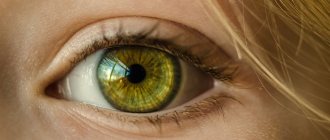Causes of reaction to cold
- Long-term chronic diseases: sinusitis, sinusitis, caries, tonsillitis;
- Disruptions in the endocrine system;
- Weakening of the immune system;
- The presence of helminths in the human body;
- Pathologies of the kidneys, diseases of the gastrointestinal tract, liver and other organs;
- Colds, stress and cancer;
- Hereditary predisposition;
- Infectious diseases: chickenpox, mumps and pneumonia;
- Allergy to dust, animal hair, pollen;
- Long-term use of antibiotics;
- Genetically programmed increased permeability of the skin and mucous membranes.
Types of cold allergies
Allergy to cold is characterized by a variety of types and forms of manifestation.
Cold dermatitis - the skin is very itchy and itchy. In severe cases of the disease, swelling of the entire body may occur.
Cold runny nose - accompanied by discharge of fluid from the nose, frequent sneezing, general weakness and headaches; nasal discharge is observed only in the cold, when a person enters a warm room, the runny nose stops;
Cold conjunctivitis – on frosty days the eyes can become very sore and watery;
Cold asthma is the most dangerous type of allergy, which is accompanied by attacks of suffocation and severe shortness of breath;
Cold erythema (urticaria) - characterized by severe redness of the skin and severe soreness in certain areas of the body.
Cold urticaria is divided into several types
Acute or chronic. With this type of allergy, severe irritation, rash and itching begins on the face and hands, and blisters appear. Certain areas of the body may turn red; in appearance it looks like insect bites. The rashes are often accompanied by lethargy, chills, and pain in the joints and muscles. Attacks of exacerbation can continue for several weeks and even months while it is cold outside.
Recurrent. It usually occurs at certain times of the year - autumn, winter and cold spring (most often it appears from early autumn to mid-spring). However, exacerbations can occur at different times of the year, depending on the air temperature. An exacerbation of an allergic reaction to cold water can begin at any season.
Reflex. It occurs exclusively when the entire body cools, but at the same time, rashes can appear only in one area of the body.
Hereditary . Passed on from generation to generation. The disease is expressed in the form of maculopapular rashes and burning. Sometimes allergies are accompanied by fever, chills, and joint pain.
Features of hereditary allergies: this is a genetically programmed gene mutation; occurs with slight hypothermia (draft, light wind); is not a lightning-fast response to an allergen; it can develop over several hours; inflammatory changes in laboratory parameters (leukocytes, CRP, ESR) are characteristic; occurs against the background of inflammatory diseases; negative ice challenge tests.
Symptoms of cold allergy
Characteristic symptoms that can be observed on any areas of the skin that react to cold.
- Swelling, redness of the skin on the face and rashes on the hands;
- Dryness, peeling that occurs later;
- Burning and itching of the skin on the cheeks and forehead - as a reaction to the wind and hypothermia;
- Rash in the form of pimples and small blisters on closed areas - thighs, ankles or all over the body;
- Signs of respiratory diseases (sneezing, runny nose), which appear in the cold, but disappear in a warm room;
- Weakness and headaches;
- It is not uncommon for bruises to appear on the areas of the rash after 24-48 hours;
What may cause the reaction
- Freezing weather: Exposure to low air temperatures for several minutes or longer.
- Sweating: A reaction can occur even on a warm day. The breeze quickly cools damp skin, causing rashes.
- Visit to the swimming pool. You have to be especially careful when swimming. An accelerated heartbeat combined with an allergic reaction can cause a sharp drop in blood pressure.
- Cold solution for intravenous administration. Refrigerated IV solution may cause an allergic reaction and pain in the limb through which it is administered if the person is allergic to cold.
- Chilled foods and drinks: Consuming cold foods (ice cream, ice water) can cause the tongue and surrounding tissues to swell.
- Cool and cold surfaces: Contact with cold surfaces (if sitting on a cold stone) can result in the development of an allergic rash on the contact area.
- Cold indoor air: Walking into a heavily air-conditioned room on a summer day can lead to an allergic reaction to exposed skin, nasal congestion from breathing in cool air, and possibly a feeling of fatigue.
- Impaired blood flow: Activities that strain muscles and impair blood flow can cool the affected parts of the body, causing itching and rashes.
If you find yourself with one of the above symptoms, contact an allergist or dermatologist to clarify the diagnosis.
Don’t make a diagnosis yourself and don’t start the disease!
Cold urticaria: features of diagnosis and treatment
Cold urticaria (CU) is a form of physical urticaria, which is characterized by the rapid appearance of blisters and/or angioedema as a result of exposure to cold (more precisely, a sudden drop in temperature, for example, after contact with cold water, rain, snow, ingestion of cold drinks/foods etc.) in sensitive individuals.
Since the description of HC, first made in 1864 by Bourdon, there is still no precise explanation for this phenomenon.
In 2009, a joint expert group of European allergists-immunologists and dermatologists published guidelines defining physical and cholinergic urticaria and recommending challenge testing to confirm these diagnoses (
) [1]. Scientists have separately identified the cholinergic form of urticaria due to the fact that with it, symptoms appear due to an increase in body temperature, and not due to the effect of exogenous physical factors on the skin, as is the case in general with physical urticaria.
This document does not contain another classification of HC, which is found in the scientific literature. Thus, scientists distinguish two main types of urticaria: 1) acquired - primary (synonym - cold contact urticaria) and secondary; 2) hereditary (family) CC [2–4]. In addition, 9 different subtypes of acquired chronic disease have been described: in the form of immediate and delayed reactions; localized cold urticaria, as well as generalized (systemic) manifestations, etc.
CC is also classified depending on the response to a cold test (technique: apply an ice cube to the forearm for 4 minutes, evaluate the effect after 10 minutes by the appearance of a skin reaction in the form of a blister or swelling): if the test is positive, then this is primary or secondary CC depending on the etiology; if the test is atypical (slow or the reaction occurred elsewhere) or negative if the patient has clinical symptoms, this is atypical acquired urticaria.
Most often, patients experience primary or idiopathic acquired chronic urticaria; the hereditary form of CU is diagnosed in children at an early age (it is extremely rare). Acquired urticaria primarily affects women over the age of 25–30 years, although several studies have shown that symptoms of the disease can appear in children and adolescents, sometimes in combination with other types of urticaria (eg, urticarial dermographism).
Hereditary CU (or familial cold autoinflammatory syndrome) is one of the variants of the so-called cryopyrin-associated periodic syndrome (CAPS), which also includes Michael-Wells syndrome and chronic infantile neurocutaneous articular syndrome/infantile multisystem inflammatory disease ( Chronic Infantile Onset Neurologic Cutneous Articular/Neonatal Onset Multisystem Inflammatory Disease - CINCA/NOMID) [5–7]. In 2009, American scientists described a new hereditary disease - familial atypical CU [8].
The etiopathogenesis of CC is not completely clear. In most patients the disease is idiopathic. There are reports in the literature about a possible connection between the occurrence of CU and infections (syphilis, infectious mononucleosis), malignant neoplasms, autoimmune diseases, systemic vasculitis, medication, etc. In 2004, Spanish pediatricians described a clinical case of severe persistent CU that occurred in a child several months after suffering from infectious mononucleosis [2].
Acquired CU is also associated with primary or secondary cryoglobulinemia, which is found in patients with lymphoproliferative diseases and hepatitis C. Secondary CU can occur with serum sickness and hemophilia; Cases of the occurrence of CC after taking certain medications (tetanus serum, oral contraceptives, griseofulvin, etc.), as well as the bite of hymenoptera insects, have been described. In 2008, in the journal Allergy, Ducommun et al. described the so-called local CC, which arose in a patient undergoing a course of allergen-specific immunotherapy with pollen allergens (Fostal): in the second year of therapy with the allergen vaccine at the injection site after exposure to cold (cold shower, cold air), the patient developed itching and hyperemia of the skin [9]. The cold ice test was strongly positive on the arm where the vaccine was administered, weakly positive on the opposite arm, and negative on the forearm and lower extremities. The patient's course of allergen-specific immunotherapy (ASIT) was continued along with an antihistamine. There are descriptions of cases of the occurrence of local CC after skin testing [9].
In the pathophysiology of urticaria in general and urticaria in particular, histamine and mast cells (as the most important effector cells producing it) are given primary importance. An increase in the level of histamine in the blood and skin biopsies in patients with chronic urticaria has been shown in many studies. However, the concentration of histamine in the blood of different patients with chronic chronic disease varies greatly: there are observations indicating a weak clinical effect of antihistamines at low histamine levels [10]. It is possible that mast cells are activated by neuropeptides. The low level of leukotriene C4, detected in the majority of patients with CC, according to Nuutinen R. et al., explains the ineffectiveness of the leukotriene receptor modifier, montelukast, in their treatment [10].
There are isolated publications concerning the role of other mediators (in particular, PGD2, leukotriene E4, chemotactic factors, platelet activating factor, TNF-alpha, IL-3, etc.) in the occurrence of CC.
The pathogenesis of familial cold autoinflammatory syndrome is associated with changes in the cryopyrin protein (due to a mutation in the CIAS1 gene), which activates caspase 1, which leads to the release of IL-1 and the secretion of inflammatory cytokines IL-6, TNF-alpha, etc. [5– 7]. The high therapeutic efficacy of the IL-1 receptor antagonist drug Anakinra in preventing cold-induced symptoms (as documented by clinical and immunohistochemical data) supports the fact that IL-1 plays a central role in this autoinflammatory syndrome [6, 7].
The frequency of detected atopy in patients with chronic chronic disease does not differ from that in the general population; There are also no differences among atopics in the severity or duration of clinical symptoms of CU.
So, HC is a heterogeneous syndrome. Let's consider its clinical manifestations.
Clinic
In HC patients, burning, itching, erythema, blistering and/or swelling of the skin appear within a few minutes after contact with cold water/icy air. As a rule, these symptoms appear mainly on the face and hands; often peak during rewarming of chilled areas of the body and disappear within 30–60 minutes. Sometimes CU can be accompanied by persistent urticarial rashes, which usually appear a few minutes after exposure to cold, but persist for a week or longer. Another variant of CU is the occurrence of urticarial rashes in a different location - around the cooled area of the skin, and not where the skin was exposed to cold - the so-called reflex CU [2–4]. Some patients may experience swelling of the lips, tongue and throat after eating cold food or drinks.
Patients are also diagnosed with disorders of the cardiovascular and respiratory systems; Gastrointestinal symptoms (abdominal pain, diarrhea) may occur.
The more pronounced the clinical symptoms, the more severe the chronic disease. Undoubtedly, the severity of the clinical manifestations of CC depends on the cooling area and the cooling factor. Thus, in persons who are very sensitive to cold, cooling a significant surface of the body can cause an anaphylactoid reaction: syncope, nausea, vomiting, dizziness, shortness of breath, tachycardia, decreased blood pressure, etc. Cases of deaths caused by exposure to cold have been described (for example, after diving such a sick person into the water, etc.).
In localized CC, the wheal and/or angioedema affects only a limited surface of the skin after exposure to cold.
Cold erythema is accompanied by pain and erythema of the skin area that has been cooled, without the development of typical blisters and itching; a test with ice gives a positive result.
Familial CC is transmitted in an autosomal dominant manner. As E. S. Fedorov et al. describe in their article, all three autoinflammatory syndromes from the CAPS group (familial cold autoinflammatory syndrome, Michael-Wells syndrome and chronic infantile neurocutaneous articular syndrome/infantile multisystem inflammatory disease - CINCA/NOMID) characterized by early onset (usually in the first year of life), recurrent episodes of fever, urticaria-type rash, a wide range of joint damage from arthralgia to recurrent and persistent arthritis in severe variants, and also (for Michael-Wells syndrome and CINCA/NOMID) damage to the central and peripheral nervous system [5].
Thus, Michael-Wells syndrome - a generalized inflammatory reaction to cold air/damp, humid weather - is characterized by the appearance of itchy rashes with a diameter of 0.2-3 cm, which persist for 5-24 hours; polyarthritis (articular syndrome can be presented from short cases of arthralgia to relapses of arthritis of large joints); conjunctivitis; increased temperature (not always), leukocytes and the level of C-reactive protein in the blood; later, such patients may develop renal amyloidosis [5, 7]. There are no cryoglobulins and cold agglutinins in the blood; In some of these patients, the ice/cold water challenge may be negative, but after exposure to cold air they develop rashes and itchy skin. Histologically, vasodilation and tissue infiltration by neutrophils, monocytes and macrophages are detected (as in other types of urticaria). In addition, Michael-Wells syndrome is characterized by the progression of sensorineural hearing loss in patients. It is possible that some patients with renal amyloidosis and sensorineural hearing loss have inaccurate diagnoses due to the latent course of the autoinflammatory syndrome. Also, attacks with Michael-Wells syndrome can be provoked, on the contrary, by exposure to high temperatures, stress, and intense physical activity. The disease usually begins in childhood, but cases have also been described in adults [5].
Familial cold autoinflammatory syndrome/familial CU is almost always diagnosed in children in the first 6 months of life based on such cardinal symptoms as fever, urticaria, arthralgia, which occur 1–2 hours after exposure to cold, reach a peak after 6–8 hours and disappear after 24 hours. In addition, attacks can be accompanied by conjunctivitis, sweating, drowsiness, headache, excruciating thirst and nausea [6, 7]. It is important to note that even slight exposure to cold (ventilating the room) can trigger an attack. Exacerbations of the disease are more common in the cold season.
Cases of cold autoinflammatory syndrome/familial CU usually have a history in close relatives. Differential diagnosis is carried out with idiopathic chronic cancer, which is not characterized by an increase in ESR and C-reactive protein.
A new variant of atypical familial CU, which differs from acquired CU and familial cold autoinflammatory syndrome, was recently described by Gandhi C. et al. in members of several families: such patients from early childhood experienced itching, erythema and urticarial rashes on the skin after exposure to cold; in some cases, the anamnesis also included angioedema, convulsions, and syncope [8]. Symptoms of the disease were provoked by triggers such as cold atmospheric air (100% of cases), water treatments (92%), and ingestion of cold food or drinks. Skin biopsy samples showed infiltration of mast cells, which rapidly degranulated after cold challenge. This new syndrome—called familial atypical CU—is distinguished from acquired CU and familial cold autoinflammatory syndrome by the absence of fever, chills, and other systemic symptoms and joint involvement. The pathogenetic and genetic features of this nosology require further assessment.
Cases of anaphylaxis induced by exercise in the cold (playing football or cycling in winter) have been described. In such cases, in patients it is necessary to exclude cholinergic urticaria caused by exposure to cold factors (in this case, physical exercise in a warm room does not cause relapse of urticaria, and the cold test is negative).
Diagnostics
The clinical diagnosis of CU should be confirmed by performing an ice challenge test. To do this, ice is placed in a thin plastic bag to prevent direct skin contact with water and to avoid confusion with aquagenic urticaria in the event of a positive test. An ice cube is applied to the forearm and the reaction is observed (the time for assessing the reaction is after 10 minutes) (). In patients with very high sensitivity to cold, the reaction may occur within 30 seconds; in others, with a positive medical history, it may be more delayed (for example, observed after 20 minutes). The test is considered positive if the patient develops a palpable and clearly visible blister and erythema at the site of ice application, which in most cases are accompanied by burning and itching of the skin.
The use of other provocative tests (staying in a cold room (4 °C) without clothes for 10–20 minutes; a modified cold test with immersion of the forearm in cold water (4 °C) for 10 minutes, etc.) is currently experts are not recommended due to the high likelihood of developing systemic manifestations of CU in such patients [1]. Instead, the expert group proposed a two-step approach to conducting a provocative cold test: if a patient has a positive cold test with ice, the patient is determined by the threshold temperature at which a skin reaction occurs. For this purpose, scientists recommend using the so-called TempTest - this device is currently approved for research purposes and is being approved as a medical device for diagnosing urticaria in clinics. The device allows you to test the skin's reaction to exposure to 32 different temperatures simultaneously (between 4-35 ± 0.1 ° C), which will help the patient obtain important information about the temperature threshold that poses a risk of developing the disease (
) [1, 11]. At the same time, the time required to induce a positive reaction is of prognostic significance: there is an inversely proportional relationship between the time required to respond to cold of a certain temperature and the severity of the symptoms of the disease. Some studies show that severe systemic reactions are more likely to occur in patients who have a positive cold test within three minutes of applying an ice cube.
Also, patients with chronic hepatitis are prescribed a general blood test, blood biochemistry (the functions of the liver, kidneys, protein fraction are examined), rheumatoid factor, levels of serum immunoglobulins, C3, C4, fibrinogen, cryoprecipitins, cold agglutinins, as well as antibodies to Epstein-Barr viruses, hepatitis are determined. C, B, chlamydia, etc.
Treatment
Patients with HC are first of all advised not to overcool, wash with warm water, wear warm clothes (cotton or linen) and a hat, and not eat cold food or drink [4]. Such patients are prohibited from swimming in the sea or engaging in physical activity in the cold. Before leaving home, patients with CC should apply special products to exposed parts of the body (face, hands, lips) that protect the skin from the effects of cold (for children from the first days of life and adults - Cold Cream and Barriederm (Uriage); only for children in under 14 years of age - Cold cream (Mustela), etc.).
Thus, Barriederm contains softening and protective substances that make it possible to resist aggression, regardless of the type: climatic (wind, frost), chemical (detergents), etc. Two polymers - pyrrolidone and phosphorylcholine - have an effect at two levels of the stratum corneum: on surface and at a depth of up to 10 µm. In addition, Uriage thermal water, which is part of Barriederma, has such properties as moisturizing (analogous to the mineral salts of the hydrolipid film); sedative: rich in calcium (suppresses histamine release); filmogenic and healing (Si, Cu, Zn). Barrierderm is applied to the skin 5–10 minutes before leaving the house or contacting water: evenly, do not massage, do not achieve complete absorption (update the frequency of application depending on the circumstances). Barrierderm for lips - designed to protect lips from aggressive environmental factors. The original effect of the drug is manifested in providing superficial isolation, restoration of the mucous membrane of the lips and a long-term soothing effect.
The clinical effectiveness of antihistamines in chronic urticaria is very variable, although they occupy a central place in its treatment. Undoubtedly, patients should be prescribed second-generation antihistamines (desloratadine, cetirizine, fexofenadine, levocetirizine) for 3–4 weeks. Recently, scientists from Germany proposed treating patients with acquired CC with desloratadine at a dose of 20 mg (in the absence of a therapeutic response to 5 mg) [3]. Cases of successful effects from taking ketotifen, a combination of H1- and H2-blockers, doxepin, etc. have been described. The effectiveness of leukotriene antagonists may also vary in different patients with chronic chronicle. However, the combined use of montelukast and cetirizine in the study by Nuutinen R. et al. was not accompanied by an additional effect in inhibiting the size of the blister in patients with chronic chronic disease [10]. Cases of successful treatment of patients with CC using the anti-IgE drug omalizumab (Xolair) have been described [12]. Treatment of a patient with CC and hepatitis C with the antiviral drug interferon-beta led to the complete disappearance of clinical symptoms of cold allergy and cryoglobulins [13].
Cases of sudden life-threatening episodes of anaphylactoid reactions to cold require immediate administration of adrenaline to the patient (undoubtedly, an adrenaline auto-injector is ideal in such cases, which, unfortunately, is still not registered in Russia).
Treatment of patients with familial chronic chronic disease also includes measures to prevent exposure to cold and the administration of non-steroidal anti-inflammatory drugs during attacks, and the use of high-dose glucorticoid therapy. However, such therapy does not change the course and prognosis of autoinflammatory syndrome. Only with the advent of the biological drug Anakinra (it is administered daily subcutaneously at a dose of 1 mg/kg) is a high therapeutic effect associated with autoinflammatory syndrome [5, 7].
Conclusion
There are reports that CU may eventually disappear in most patients. However, there are few scientific studies in the literature concerning the etiopathogenesis of secondary cold allergies, in particular those associated with infections. The therapeutic approach to this problem also requires detailed study. In the accessible Russian press, we have not found descriptions of cases of familial cold urticaria - what is the problem here: fortunately, in the absence of this severe pathology in our patients or in our insufficient knowledge about CC?..
Literature
- Magerl M., Borzova E., Gimnez-Arnau A. et al. The definition and diagnostic testing of physical and cholinergic urticarias - EAACI/GA2 LEN/EDF/UNEV consensus panel recommendations // Allergy. 2009: 64: 1715–1721.
- Morais-Almeida R., Marinho S., Gaspar A. et al. Cold urticaria and infectious mononucleosis in children // Allergol Immunopathol (Madr). 2004; 32: 368–371.
- Giebenhaar F., Degener F., Zuberbier T., Martus P., Maurer M. High-dose desloratadine decreases wheal volume and improves cold provocation thresholds compared with standard-dose treatment in patients with acquired cold urticaria: a randomized, placebo-controlled , crossover study // J Allergy Clin Immunol. 2009; 123:672–679.
- Zaikov S.V. Cold urticaria: modern approaches to diagnosis and treatment // Clinical immunology. Allergology. Infectology. 2007; 6:123.
- Fedorov E. S., Salugina S. O., Kuzmina N. N. Urticaria in the practice of a pediatric rheumatologist // Consilium Medicum, Pediatrics supplement. 2008, no. 3: 68–72.
- Shinkai K., McCalmont T., Leslie K. Cryopyrin-associated periodic syndrome and autoinflammation // Clin Exp Dermatol. 2007; 33:1–9.
- Hoffman H., Rosengren S., Boyle D. et al. Prevention of cold-associated acute inflammation in familial cold autoinflammatory syndrome by interleukin-1 receptor antagonist // Lancet. 2004; 364(9447):1779–1785.
- Gandhi C., Healy C., Wanderer A., Hoffman H. Familial atypical cold urticaria: description of a new hereditary disease // J Allergy Clin Immunol. 2009; 124:1245–1250.
- Ducommun J., Morel V., Ribi C., Hauser C. Localized cold-induced urticaria associated with specific immunotherapy for tree pollen allergy // Allergy. 2008; 63:789–790.
- Nuutinen R., Harvima I., Ackermann L. Histamine, but not Leukotriene C4, is an essential mediator in cold urticaria // Acta Dermato-Venereologica. 2007; 1:9–13.
- Siebenhaar F., Staubach P., Metz M. et al. Peltier effect-based temperature challenge: An improved method for diagnosing cold urticaria // J Allergy Clin Immunol. 2004; 114:1224–1225.
- Boyce J. Successful treatment of cold-induced urticaria/anaphylaxis with anti-IgE // Ibid. 2006; 117:1415–1458.
- Ito A., Kazama T., Ito K., Ito M. Purpura with cold urticaria in a patient with hepatitis C virus infection-associated mixed cryoglobulinemia type III: successful treatment with interferon-beta // J Dermatol. 2003; 30: 321–325.
D. Sh. Macharadze , Doctor of Medical Sciences, Professor
RUDN University, Moscow
Contact information for authors for correspondence
Diagnosis of cold allergies
Diagnosis of an allergy to cold, like any other allergy test, must be carried out in a medical center, where there are all the means and capabilities to provide immediate assistance.
List of laboratory tests for diagnosis
- General blood analysis;
- General urine analysis;
- Blood chemistry;
- Identification of lymphocytes sensitive to cryoglobulin;
- Skin tests (to exclude concomitant allergies).
- Provocative test with an ice cube;
- TempTest.
What do these tests show?
General blood analysis. The results of a complete blood count will help detect an increased number of white blood cells, eosinophils and ESR (erythrocyte sedimentation rate). These changes indicate that an allergic process is occurring in the body. However, it is not correct to draw conclusions only on the basis of a blood test, since the same results are characteristic of helminthic infestation.
General urine analysis. An increased protein content in the urine indicates a possible inflammatory process of the urinary system, for example, glomerulonephritis, which develops as a complication of allergies.
Blood chemistry. This analysis will show increased amounts of circulating immune complexes, acute-phase inflammatory proteins, and an increase in total immunoglobulin E levels.
Such changes confirm an allergic reaction in the active phase, but do not provide accurate information about the allergen.
Identification of cryoglobulin-sensitive lymphocytes. If the test results are positive, this means that the cold is the cause of the allergy.
Skin tests. Skin tests are performed if there is doubt that the cold caused the allergic reaction. Quite often, lymphocytes sensitive to cryoglobulin cannot be detected in the blood.
And if there is no important evidence of the body’s reaction to cold, then doubts are understandable. Therefore, it is necessary to make sure that the allergy is triggered by cold and is not a cross-reaction to some other allergen.
Duncan test or ice cube test. Cold sensitivity testing is usually done by placing an ice cube on the skin for a few minutes. If the reaction to the cold is positive, the area where the skin comes into contact with the ice will become red, swollen, and may develop a rash.
TempTest Helps determine the body's overall sensitivity to low temperatures. TempTest differs from the ice cube test in that it can not only detect cold urticaria, but also determine what temperature range causes symptoms.
The patient places his hand on the device panel, equipped with thermal film, for 5 minutes. Thermal film continuously generates the entire range of specified temperatures. Using this procedure, the threshold temperatures for the formation of cold urticaria are determined.
Features of prevention
The prevention plan is not complicated. It is enough for parents to protect their child from contact with the cold and take the necessary measures in time if the allergy makes itself known again.
If you have sensitive skin, cover exposed areas with a scarf or jacket with a hood. It is also advisable to switch the child to a healthy diet, but this does not mean at all that it is necessary to deprive the child of sweets and starchy foods. It is necessary to expand the child’s menu by adding more raw vegetables, fish, and fruits.








